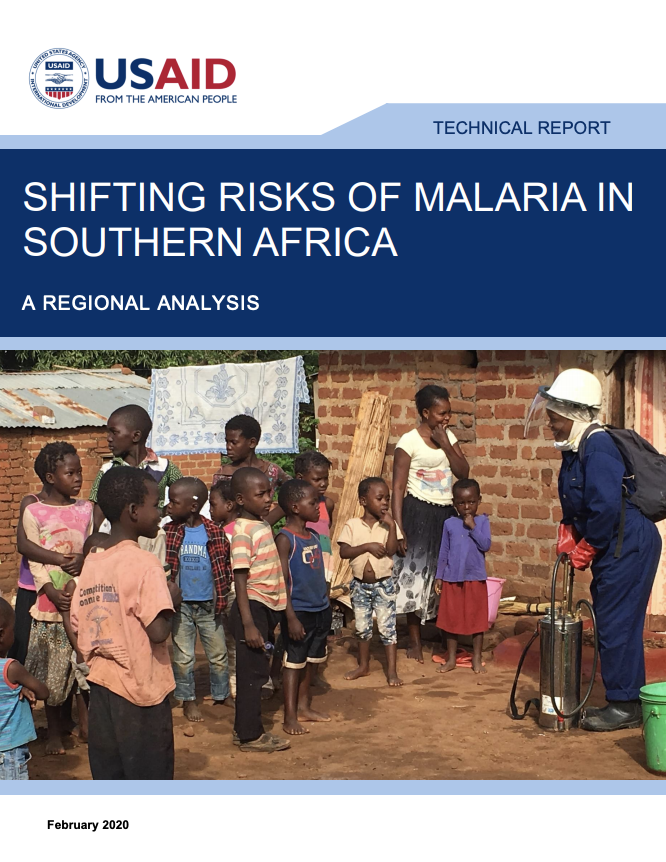USAID, 2020

Climate variability and change present both immediate and future risks to human health. Changes in temperature, precipitation and in the frequency and intensity of extreme weather events will alter the nature of vector borne diseases, such as malaria, across sub-Saharan Africa, placing more people at risk of exposure. Understanding the changing seasonality of malaria, particularly for areas previously unsuitable to the malaria carrying mosquito but becoming more suitable as the climate changes, or areas where the length of the season may extend or shorten, will better inform malaria programs and policy, supporting the goal of elimination. Addressing this changing risk profile will require modifying current interventions, putting greater emphasis on improved surveillance and predictive tools that allow policy makers and practitioners to adapt programmatic approaches and specific interventions, responding to changes in climate conditions.
This report by the USAID-funded Adaptation Thought Leadership and Assessment (ATLAS) project analyzes the shift in malaria transmission patterns for Southern Africa based on projected temperature rise by the 2030s and 2060s. The report uses modeling scenarios to illustrate changes in malaria seasonality and suitability and provide health practitioners and development planners with estimates of the number of people that will be affected by these changes. The analysis focuses on Botswana, Lesotho, Madagascar, Malawi, Mozambique, Namibia, South Africa, Swaziland, Zambia, Zimbabwe, and parts of Angola, the DRC, and Tanzania. The report concludes by highlighting opportunities for action across five domains: 1) meeting elimination targets; 2) adapting to changing epidemiology and incorporating new analytical tools; 3) improving a country’s capacity for collecting and using information; 4) building capacity in health systems; and, 5) strategic budgeting and early and targeted planning.



